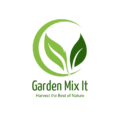In Central Florida, you can grow bell peppers from February through May and again from August to early November.
The climate in this region allows for two main growing seasons, making it ideal for both spring and fall planting. Understanding the right time to plant is key to producing healthy and flavorful peppers.
Climate Considerations in Central Florida
Central Florida has a subtropical climate, which means mild winters and hot, humid summers. These conditions can support growing peppers for most of the year, but there are key periods to avoid. Peppers need warm temperatures to thrive, but they don’t do well in extreme heat or cold.
Bell peppers grow best when daytime temperatures range between 70°F and 85°F. They don’t like cold, so avoid planting during the cooler months of December and January. The extreme heat of June and July can also stress the plants, leading to poor fruit production.
The Spring Growing Season
The spring growing season is one of the best times to plant bell peppers in Central Florida. Starting in February, temperatures begin to warm up, and the risk of frost fades. You can start planting seeds indoors in January or early February, then transplant seedlings outdoors by mid-February or early March.
During the spring season, the weather stays mild enough for bell peppers to grow well without being stressed by heat. Make sure to plant early enough to avoid the heat of late spring. By May, temperatures can start climbing, and the plants may suffer if they’re not well established.
Key Steps for Spring Planting:
- Start seeds indoors in January or early February.
- Transplant seedlings outdoors in mid-February to early March.
- Harvest from April through May.
The Fall Growing Season
In addition to the spring season, fall is another great time to grow bell peppers in Central Florida. The second growing season begins in late summer, around August. By this time, the extreme heat of summer has passed, and temperatures start to cool down slightly, giving your plants the conditions they need to thrive.
You can start seeds indoors in July or August and transplant them outside by mid-August. This gives the plants time to establish before the cooler fall weather sets in. Harvesting typically happens in October and early November before the cooler winter months arrive.
Key Steps for Fall Planting:
- Start seeds indoors in July or August.
- Transplant seedlings outdoors in mid-August.
- Harvest from October through early November.
Protecting Bell Peppers from Temperature Extremes
Bell peppers are sensitive to both cold and heat, so protecting your plants during temperature extremes is important. During cooler months, frost can damage or kill your plants. If a cold snap is expected, cover the plants with fabric or bring potted plants indoors. Similarly, during the hotter months, shading the plants or providing extra water can help prevent heat stress.
In the summer, extreme heat can lead to sunscald, where the peppers develop white, sunken spots. Providing partial shade or planting peppers in a location where they get afternoon shade can help prevent this.
Soil and Watering Needs
To grow healthy bell peppers, it’s important to provide the right soil conditions. Bell peppers need well-drained soil that’s rich in organic matter. You can improve your soil by mixing in compost before planting. Bell peppers also prefer slightly acidic soil with a pH between 6.0 and 6.8.
Watering is another important factor. Bell peppers need consistent moisture, but they don’t like waterlogged soil. Water the plants deeply once or twice a week, making sure the soil stays moist but not soggy. Mulching around the plants can help retain moisture and keep the soil temperature steady.
Fertilizing Bell Peppers
Bell peppers are heavy feeders, so providing them with the right nutrients is essential for good growth. Before planting, work a balanced fertilizer or compost into the soil. During the growing season, you can continue to feed your plants with a balanced fertilizer every two to three weeks.
Be cautious not to over-fertilize, especially with nitrogen, as this can lead to lush foliage but fewer fruits. The best fertilizer for bell peppers is one with a higher potassium and phosphorus content will encourage better fruit production.
Pests and Diseases to Watch For
Like most garden crops, bell peppers can be affected by pests and diseases. In Central Florida, common pests include aphids, caterpillars, and whiteflies. Inspect your plants regularly and remove pests by hand or with insecticidal soap.
Diseases such as bacterial leaf spot, blossom end rot, and powdery mildew can also affect bell peppers. To prevent these diseases, practice crop rotation and avoid overwatering. If you notice any signs of disease, remove affected leaves or fruits to stop the spread.
Harvesting Bell Peppers
Bell peppers are ready to harvest when they reach their full size and color. Most varieties start green and then turn red, yellow, or orange as they ripen. You can harvest bell peppers when they are still green, but waiting for them to turn color will give them a sweeter flavor.
To harvest, use a sharp knife or pruning shears to cut the peppers from the plant. Avoid pulling the peppers off by hand, as this can damage the plant. Once harvested, bell peppers can be stored in the refrigerator for up to two weeks.
So, When Can I Grow Bell Peppers in Central Florida?
Growing bell peppers in Central Florida is possible during two main periods: February through May and August through early November. By timing your planting to avoid the cold of winter and the heat of summer, you can enjoy healthy, productive plants. With the right soil, watering, and care, bell peppers can thrive in Central Florida’s subtropical climate, providing a bountiful harvest throughout the year.
Remember to start your seeds indoors, transplant them when the weather is right, and protect your plants from extreme conditions. With a little planning, growing bell peppers in Central Florida can be a rewarding experience.



